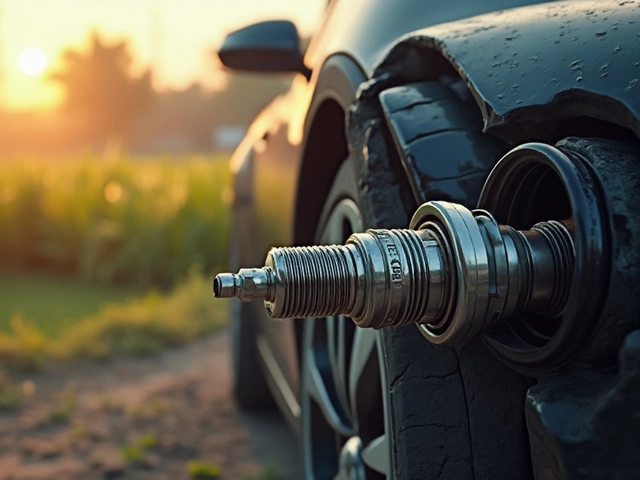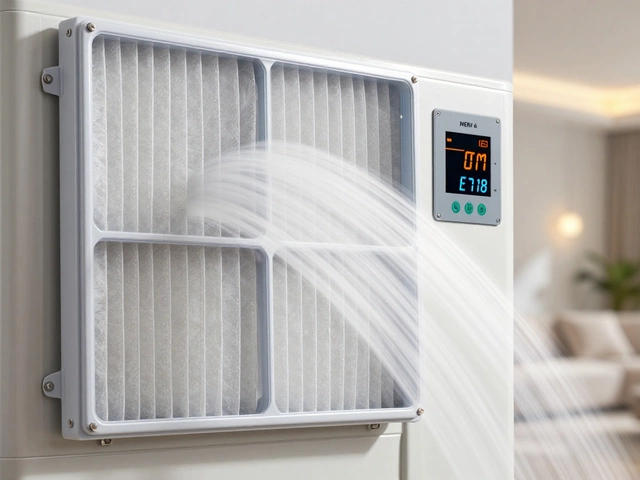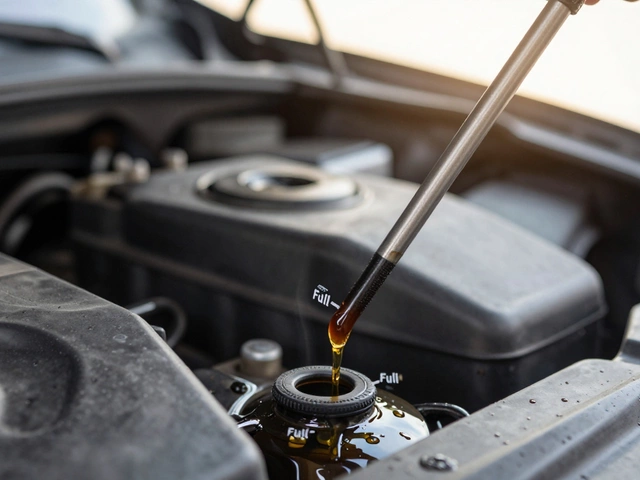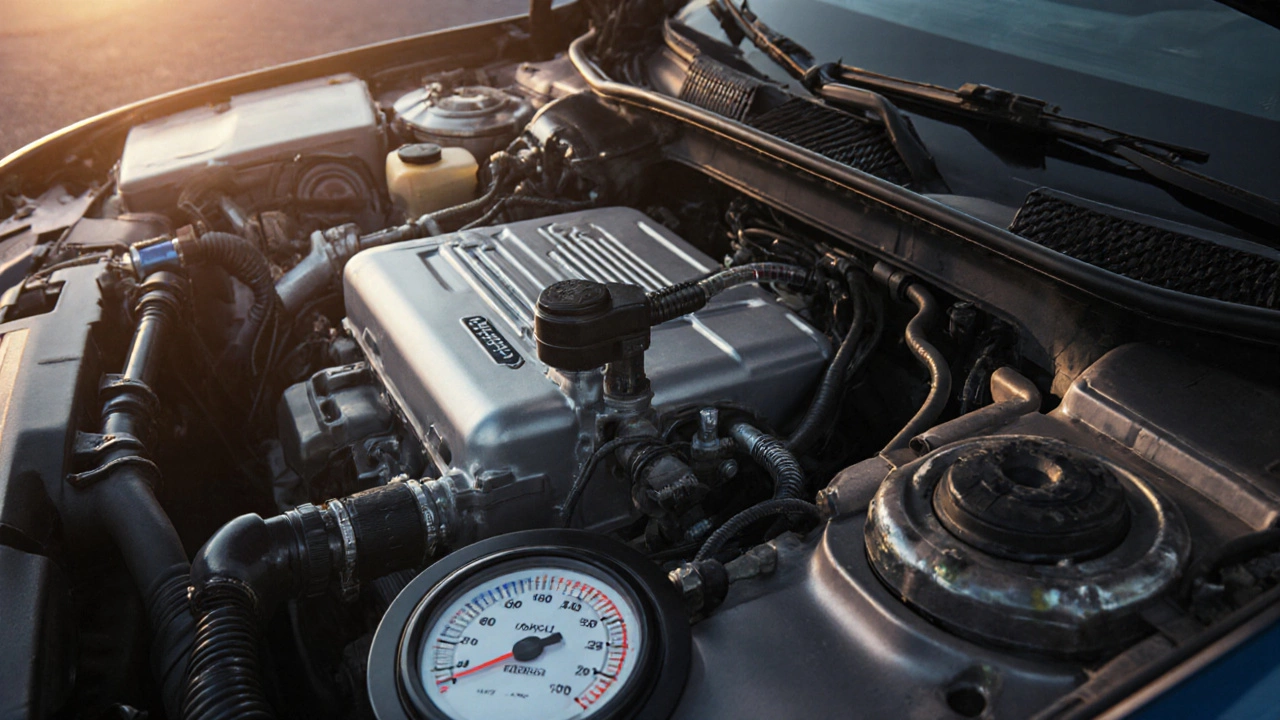
When the Fuel pump is the component that moves gasoline from the tank to the engine at the pressure needed for proper combustion, your car feels normal. The moment it starts losing pressure, the driving experience flips - stalling, rough idle, and sometimes a complete shutdown. Knowing the warning signs lets you catch the problem before you end up stranded on a motorway.
How a fuel pump actually works
Inside most modern cars lives an electric motor that draws fuel through a filter, then pushes it through high‑pressure lines to the injectors. The pump is regulated by the engine control unit (ECU) which tells it exactly how much fuel to deliver at any given rpm. If the pump can’t keep up, the ECU sees a drop in fuel pressure and reacts by adjusting timing, spark, and sometimes firing a check engine code.
Top symptoms that scream a failing pump
- Engine sputters or stalls under load - You notice a rough‑idle when you try to accelerate, especially uphill. The engine quickly dips in power because the injectors aren’t getting enough fuel.
- Hard start or no‑start condition - When you turn the key the cranking sound is there, but the engine won’t fire. A dead pump often looks like a dead battery, but the dashboard lights stay on.
- Loss of power at high speeds - Cruising on the highway feels like driving uphill even on flat roads. The pump can’t meet the demand when the engine revs past 3,000 rpm.
- Whining noise from the rear of the car - A high‑pitched whine that changes with engine speed comes from the pump’s motor struggling to push fuel.
- Fuel smell at the rear - A leaking pump or a cracked seal releases gasoline vapour that you can smell near the fuel tank.
- Fuel gauge reads empty while the tank is full - Low pressure tricks the sending unit, making the gauge think the tank is empty.
- Check engine light with codes P0087 or P0091 - These specific OBD‑II codes point to low fuel pressure or a failed fuel pump circuit.
All these clues fall under the umbrella of fuel pump symptoms, but they don’t all mean the pump is toast. Let’s separate the likely culprits.
When the symptoms overlap with other parts
Cars are interconnected; a weak battery, clogged fuel filter, or faulty fuel‑injector can mimic pump failure. Here’s a quick rule‑of‑thumb:
- If the car cranks slowly or the lights dim, check the battery first.
- If the fuel smell is strong and you see drips under the car, inspect the fuel lines and filter.
- If the engine runs fine at idle but stumbles only when you press the accelerator, the pump is the usual suspect.
Running a basic fuel‑pressure test at home can help you decide whether to call a mechanic.
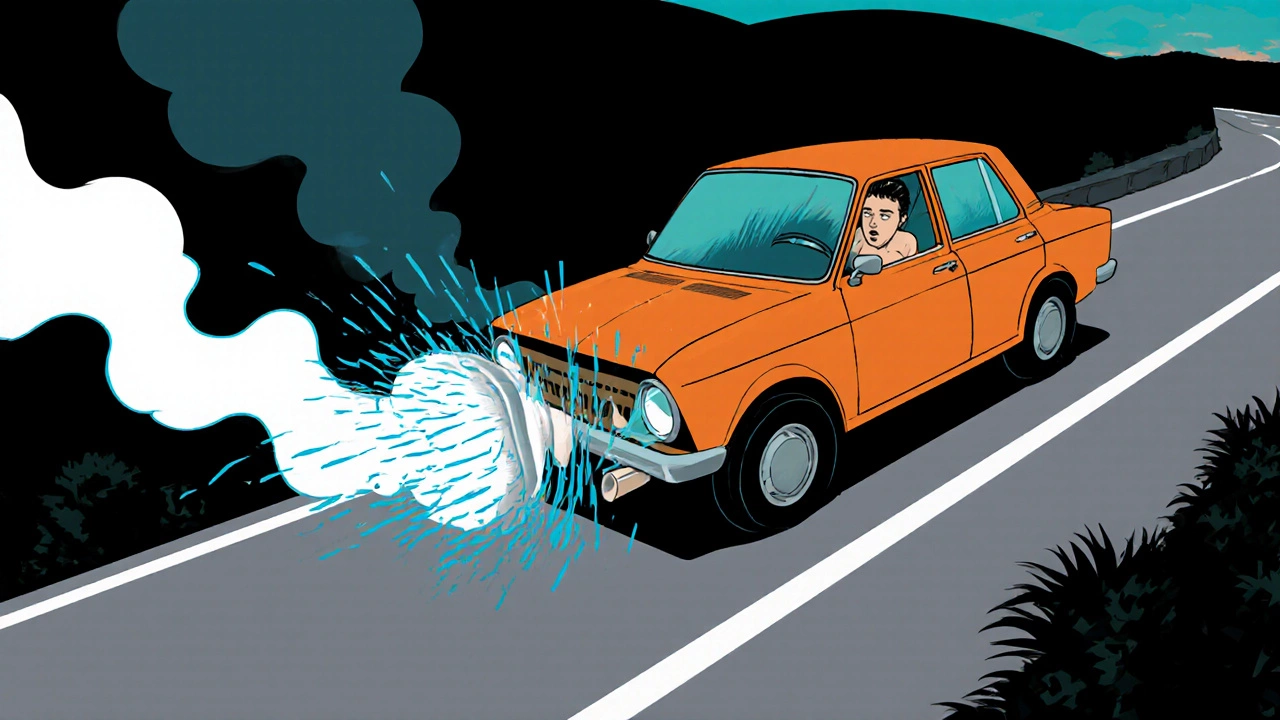
DIY checks before you call a garage
- Listen for the pump: With the ignition on (engine off), you should hear a faint whirring sound near the fuel tank for a few seconds. No sound? The pump may not be engaging.
- Check the fuel filter: A blocked filter starves the pump, causing it to overwork. Most filters are located along the fuel line; replace if it looks dirty.
- Inspect fuse and relay: Locate the fuel‑pump fuse (usually 10‑15 A) and the pump relay in the fuse box. Swap the relay with a similar one to see if the problem follows.
- Measure fuel pressure: A handheld gauge costs under $30. Connect it to the test port on the rail; most gasoline engines read between 35-45 psi at idle. Anything below 30 psi is a red flag.
If any of these steps point to a pressure drop, it’s time to get a professional in.
How mechanics diagnose a failing pump
Professional shops have a few tricks that go beyond a DIY gauge:
- Digital fuel‑pressure scanner - Connects directly to the ECU and logs pressure while you rev the engine. It shows whether the pump can keep up to the ECU’s demand curve.
- Load test - The technician applies a load to the pump’s motor while measuring voltage draw. A weak motor draws less current, confirming internal wear.
- Visual inspection - Removal of the pump lets the tech look for corroded connectors, cracked housings, or a seized motor shaft.
Most shops will replace the pump only after confirming that the fuel filter and pressure regulator are in good shape, because a new pump will fail early if the upstream components stay faulty.
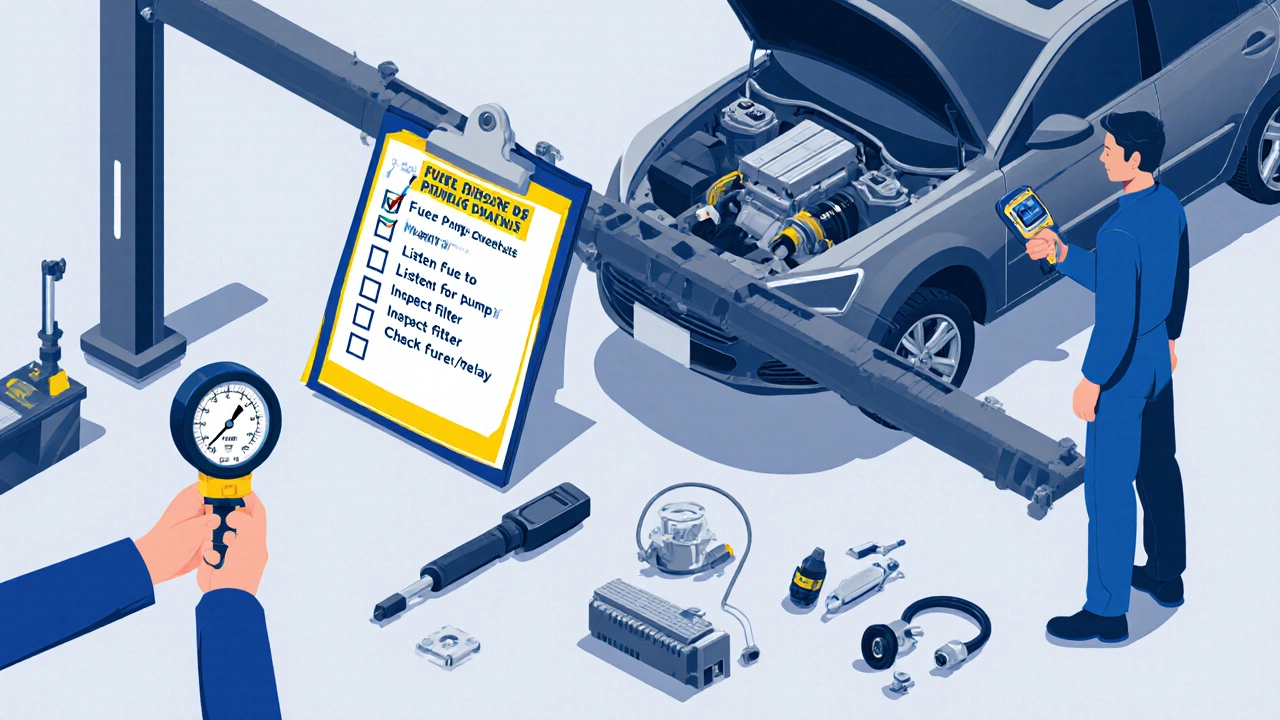
Prevention and maintenance tips
Fuel pumps are built to last 100,000 - 150,000 km, but a few habits can push that number higher:
- Keep the fuel tank at least a quarter full. Running on a low tank makes the pump suck air and run hotter. \n
- Replace the fuel filter every 40,000 km (or per manufacturer recommendation). A clean filter reduces strain.
- Use fuel from reputable stations. Contaminants like water or sediments accelerate wear.
- Periodically clean the fuel tank vent valve. A blocked vent creates a vacuum that starves the pump.
These steps don’t guarantee a problem‑free pump, but they cut the odds of an early failure dramatically.
Quick symptom checklist
| Symptom | Typical cause | Urgency |
|---|---|---|
| Engine sputters under load | Low fuel pressure, clogged filter | High - may stall |
| Hard start / no start | Failed pump, bad relay | Critical - vehicle unusable |
| Whining noise from rear | Pump motor wear | Medium - prevents long trips |
| Fuel smell near tank | Leaking pump or line | High - fire risk |
| Check engine code P0087/P0091 | Low pressure sensor reading | High - engine protection mode |
When you see a symptom in the “High” column, schedule a service appointment within 24‑48 hours. Medium‑urgency items can wait a few days, but don’t ignore them for weeks.
Frequently Asked Questions
Can a failing fuel pump cause the check engine light to stay on?
Yes. Most OBD‑II systems trigger codes P0087 (low fuel pressure) or P0091 (fuel pump circuit malfunction) when the pump can’t maintain the required pressure.
Is it safe to drive with a weak fuel pump?
You can limp home, but it’s risky. Reduced pressure can cause misfires, which overheat the catalytic converter and may leave you stranded on a busy road.
How much does a replacement fuel pump cost?
In the UK, a quality OEM pump ranges from £150 to £250 plus labour, which is typically 2‑3 hours at £80‑£100 per hour.
Can a clogged fuel filter cause the same symptoms?
Absolutely. A blocked filter starves the pump, leading to low pressure, sputtering, and even a no‑start condition. Always check the filter before replacing the pump.
Do electric vehicles have fuel pumps?
No. EVs run on electricity stored in batteries, so there’s no fuel system at all. The term only applies to internal‑combustion engines.
Spotting the warning signs early can save you both time and money. Keep an eye on the symptoms listed above, run a quick pressure test if you can, and don’t wait too long before getting a professional opinion.
